Illustrate Your Story with AI?
You’ve probably read about OpenAI and how artificial intelligence has come of age. It’s easy enough to generate articles and blog posts using tools such as ChatGPT, and if they turn out a bit too academic or clinical, you can turn to tools like QuillBot to make the language more colloquial.
But AI can also be used to generate art—which is weird if you consider that computers are not usually anyone’s go-to source for aesthetic decision-making. For this post (which I’m writing myself without AI help), I put the DALL-E-2 AI through its paces to illustrate one of my short sailing stories.
I’ll share the story with the illustrations first so you can see the capabilities. Then I’ll share some of the limitations and stumbling blocks I encountered.
Saturnalia
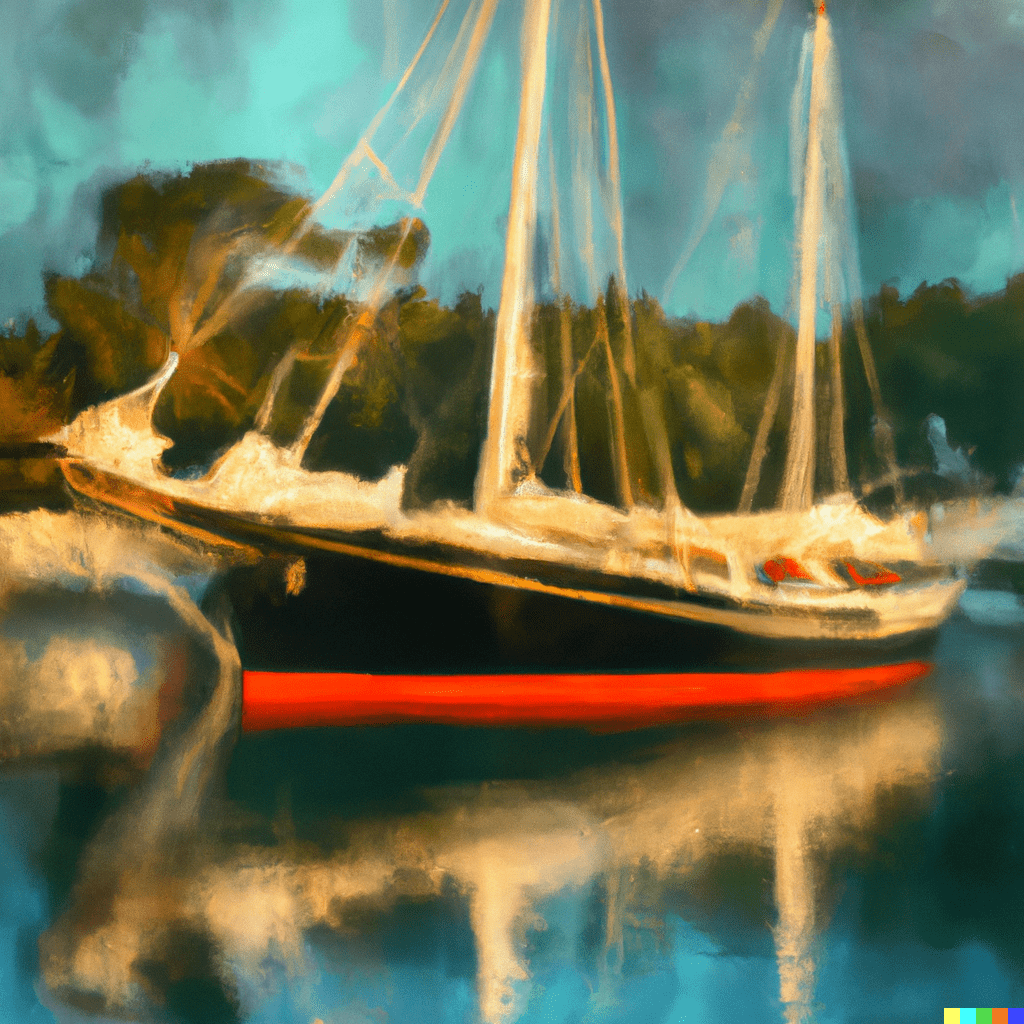
The Schooner Zebra Dun anchored at Man-O-War Cay
John Nation and I sit on the deck of Zebra Dun in Man O’ War Harbour.
Diana rows over to visit. She and Richard have had a little too much togetherness over on Killer Tomato; thirty-two feet isn’t much space to share sometimes, especially when you’re not doing much sailing. Man O’ War Cay is a perfect place to just sit and be, but one can only tolerate so much sitting and so much being before one has to go sit and be somewhere else with someone else.
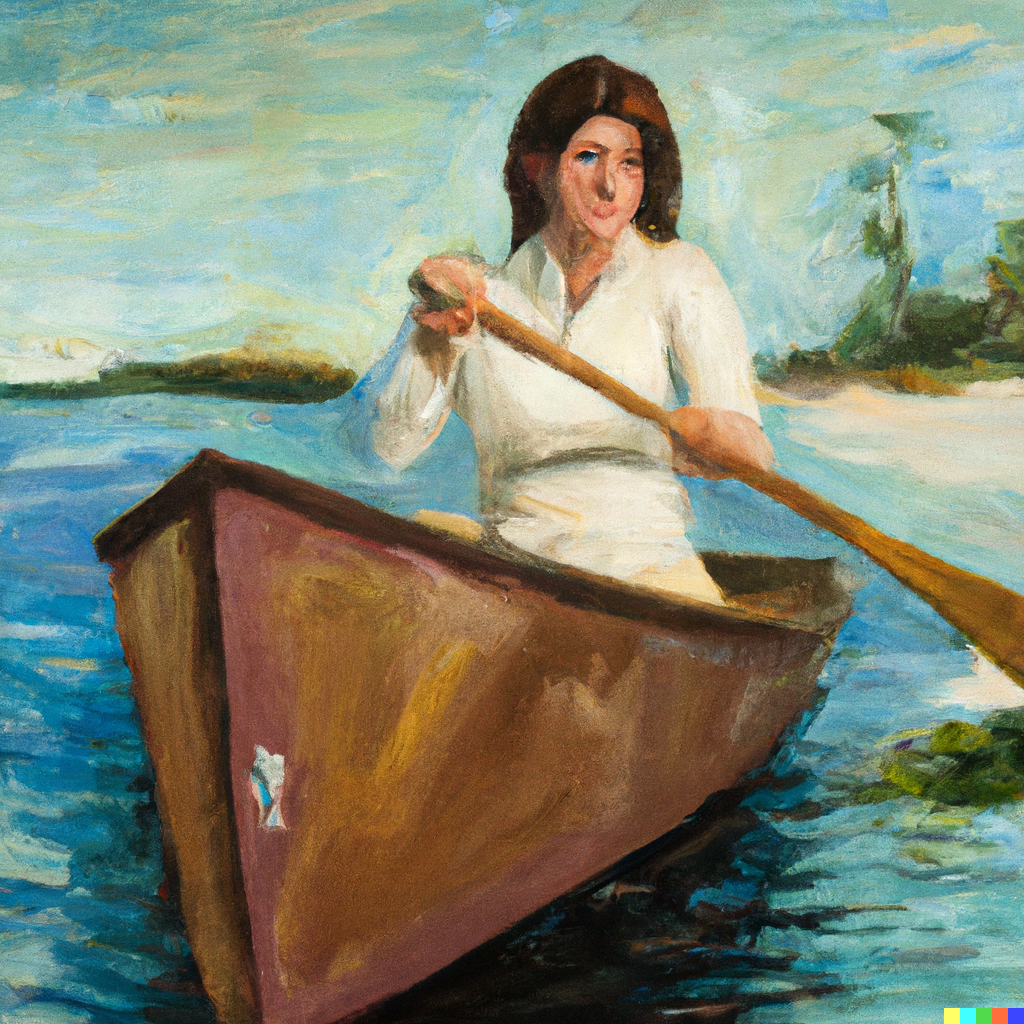
Diana complains for a few minutes. In her late forties, she’s looking for a relationship that’s more serious than being Richard’s boating accessory, but having escaped her fiberglass confines, she soon decompresses and reverts to her usual, bubbly self.
Diana points to Rabbit, a white sloop with an unusual, rounded stern anchored nearby. “Have you met Doc?” she asks.
We shake our heads.
The boat’s been here as long as we have, stored on a mooring in the protected lagoon at Man O’ War Cay. We don’t even notice Rabbit anymore, which is why we both missed that today, someone is aboard; a dinghy is tied behind her.
“I used to work with Doc back in Palm Beach when I was a nurse,” Diana explains. “He’s a physician. He bought the boat to retire on but he hasn’t gotten to use it much. Now, he’s shut down his practice. He’s here in the Abacos for a while. You’ll like him; he’s a really sweet guy.”
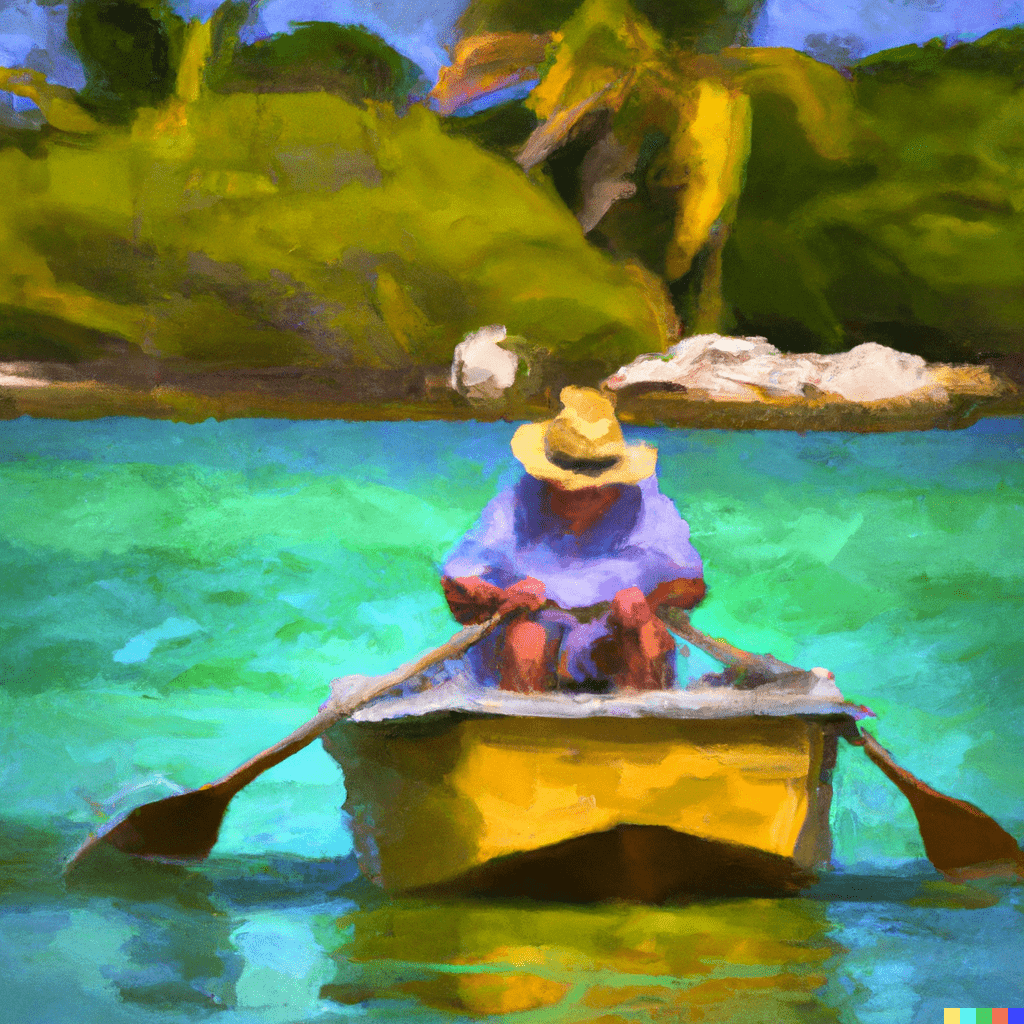
On cue, Doc appears in his cockpit. Diana calls to him and waves him over. Soon a short, silver-haired man with permanently hunched shoulders joins us on deck. Quiet and intelligent, Doc shows all the signs of recent arrival, like someone who went into the light not knowing what to expect and awoke in a strange world swathed in vivid blues and greens. He’s still adjusting, opening his eyes—a process that takes some time; the land of clocks and calendars is not easily forsaken. “I hope…” he says slowly, “I hope I can stay here a while. I’ve dreamed of getting away, but my family thinks I’m crazy. ‘It’s not safe for someone my age,’ they say. ‘Surely, you must be lonely on a boat by yourself.’ I worked hard for forty years and now that I can finally get what I’ve waited so long for, my kids and grandkids can’t stop coming up with plans to ‘keep the old man entertained.’”
Sitting in a folding chair on the Zebra Dun’s mahogany deck, Doc closes his eyes and breathes deep, traveling back in time, carrying his present with him. He smiles. For now, he’s here, doing what he wants to do. He’s been missing a simple, intangible something. Maybe, this is it?
Like these islands, John’s wooden schooner suggests a certain other-worldliness. I have no quarrels with fiberglass boats; they have their advantages and I happen to live on one, but the unique sounds, smells and images associated with traditional wooden boats connect one more readily to history, romance and tradition. A handcrafted wooden vessel has stories to tell, and suggests by reference that those who sail aboard her will, too. Many yachtsmen carry a Jolly Roger ensign but few fly those colors without an air of cheap costumery. When the skull and bones are hauled to the masthead of the Zebra Dun, the effect is striking and authentic.
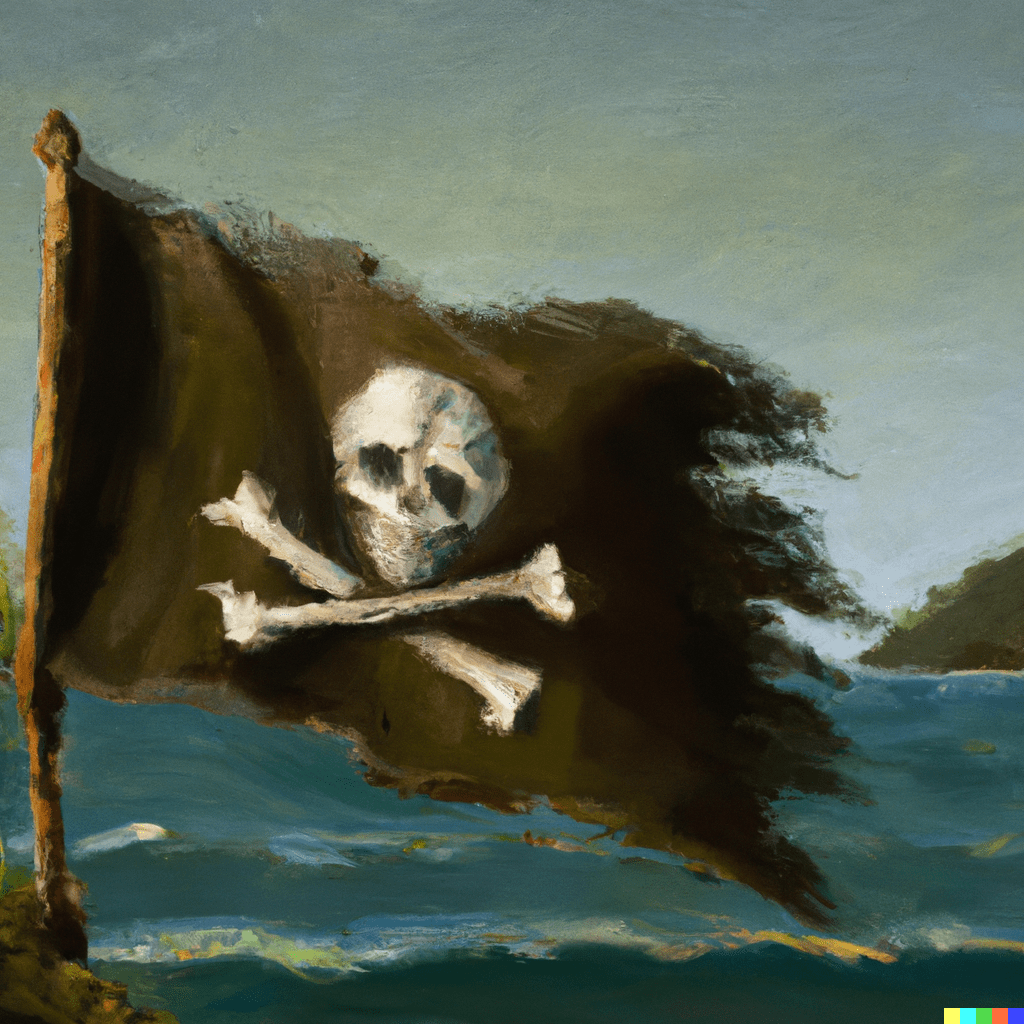
In a former life, before he got a divorce and a wooden schooner, John directed a planetarium in Oklahoma. He describes how we are about to experience a rare triple conjunction of Saturn, Uranus and Neptune. Such planetary alignments, he explains, have been blamed for wars and earthquakes, floods and famines, momentous political shifts, flashes of technological innovation and bursts of creative expression. As we speak, astrologers sharpen pencils and put fresh ink ribbons in typewriters, scouring the news for important events and catastrophes to validate the profound effects of the celestial alignment. Astronomers polish mirrors and lenses in powerful telescopes. In Washington, D.C., President Reagan is warned by top advisers not to make major policy decisions until the conjunction passes.
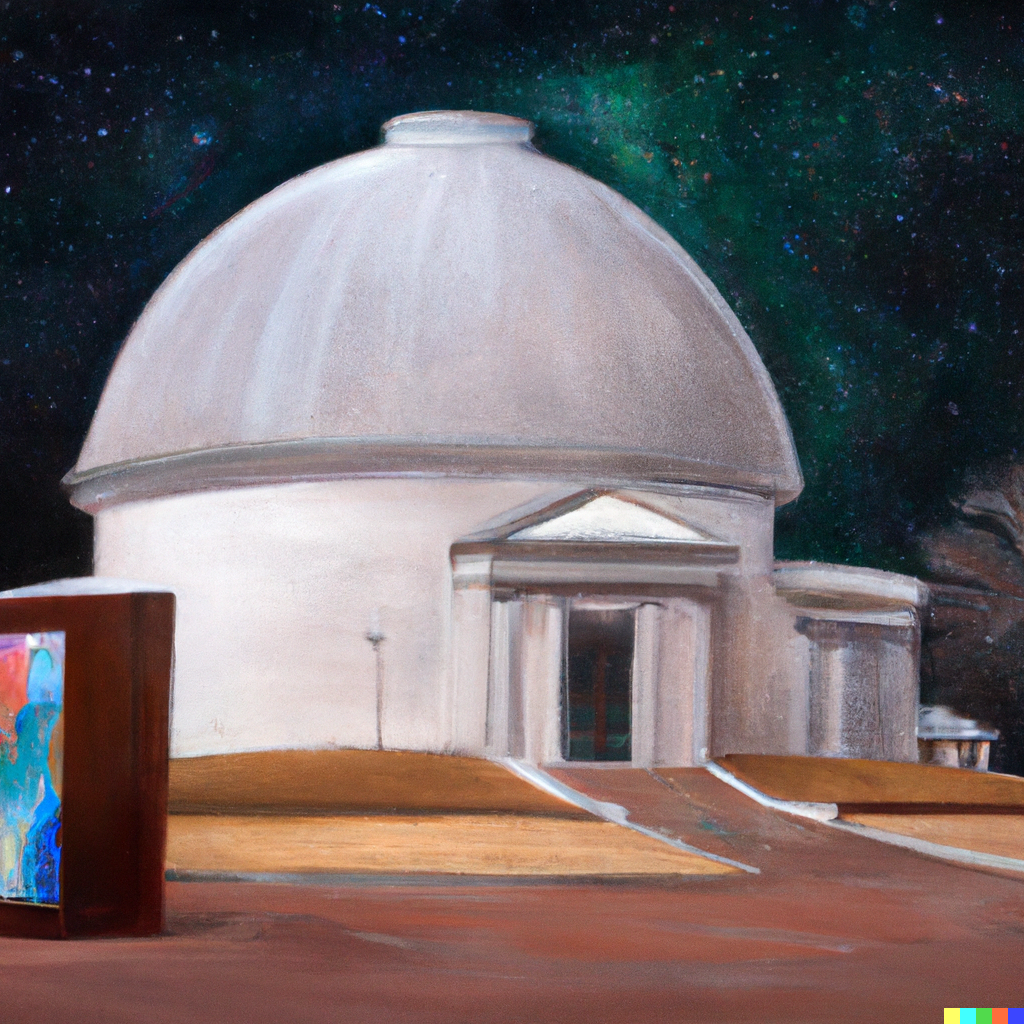
John never lost his boyhood fascination with the stars. He grows more and more animated as he holds court on deck, describing how the celestial bodies, with the exception of distant Pluto, orbit the sun in alignment, almost as a set of concentric, elliptical rings—though debate over the validity of Pluto’s status as an official planet remains open. Each satellite orbits at a different speed; it’s rare enough that any two are at the same point of orbit at the same time. Tomorrow night there will be three.
Once, in Marsh Harbour, while waiting to use a shower provided to cruisers by the Tiki Hut bar as an enticement to buy drinks, I happen to glance up as a rocket is climbing into the sky. We’re nearly at the same latitude as Cape Canaveral, and because the U.S. doesn’t launch potentially dangerous rockets over the heads of its own citizens, this one is aimed over the heads of the citizens of these northernmost islands of the Bahamas. In fact, large pieces of recovered booster rocket heat shield lean against a mahogany tree in the yard of a Man O’ War fisherman. Through the louvered door of the shower, John hears my exclamation about the rocket. In an instant, he’s standing on the dock, dripping wet, clad only in a towel, narrating the stages of the launch, oblivious to the surprised expressions of a crowd of onlookers.

Today, whether at the simple peak of his enthusiasm or affected, himself, by the growing confluence of planetary gravity, John pauses to take a breath. “We are going to have ourselves a saturnalia,” he proclaims.
“How much money you got, Bricker?” he asks. A number of John’s proclamations are followed by this unfortunate question.
“About four or five dollars.”
“That ought to do it. I have a few dollars left and a cast-iron Dutch oven stashed under the bridge deck behind the wood stove. Between us, we can afford a chicken and some brown sugar, some veggies and some fresh garlic. Tomorrow, let’s sail over to Shell Island where it’s dark and the viewing horizon is low. We’ll build a fire and roast us up a chicken to honor the pagan gods.”
“Doc? Diana? Join us? Richard’s welcome if you can get him to move, Diana.”
“I’m in,” says Doc without hesitation.
Diana nods over her shoulder at the Killer Tomato and rolls her eyes. “Not much chance of getting mister I-never-sail-on-the-boat-I-happen-to-be-retired-in-the-Bahamas-on to do much of anything. I’m afraid it’s going to be a bachelors’ night out for you guys.”
After lunch the next day, Blue Monk follows Zebra Dun through the narrow, rocky cut out of Man O’ War Harbour. Doc is not far behind on Rabbit. We turn to starboard, heading northwest across the Little Bahama Bank. A mild norther is blowing. The wind on our beam should make for ideal sailing but we’re in the lee of the out-islands much of the time; the breeze is light. We motor-sail to ensure we reach our destination with daylight to spare. Leaving Man O’ War Cay behind, we pass the low, rocky islets of the Fowl Cays Sea Park, privately-owned Scotland Cay and the comparatively lengthy coast of Great Guana Cay which accounts for almost half of our thirteen mile journey.
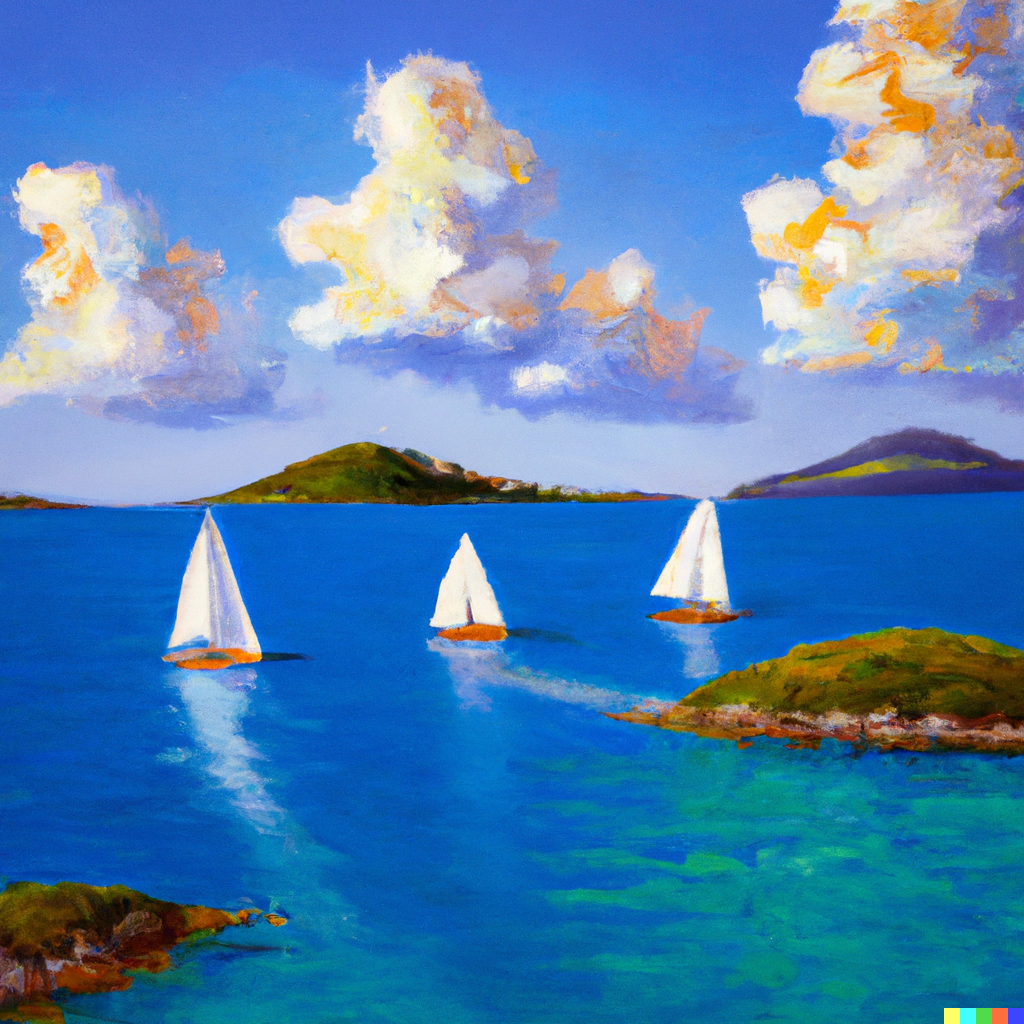
At the end of Great Guana Cay is Whale Cay passage; a deep-water entrance from the North Atlantic Ocean to the Abaco banks. No place to be in unsettled weather, the seas in this cut pile up in ten-foot swells even when the wind is light. Local folklore says there are many boats on the bottom here. Whale Cay, itself, is a barren, rocky hump, swept clean by angry waves. Undeterred by big seas, enormous cruise ships make their way through the cut onto the banks into a sheltered, dredged mooring area. The cruise lines have developed the northwest end of Guana Cay into a private beach paradise with bars, t-shirt stands and calypso bands—everything a sun and alcohol-seeking vacationer might desire.
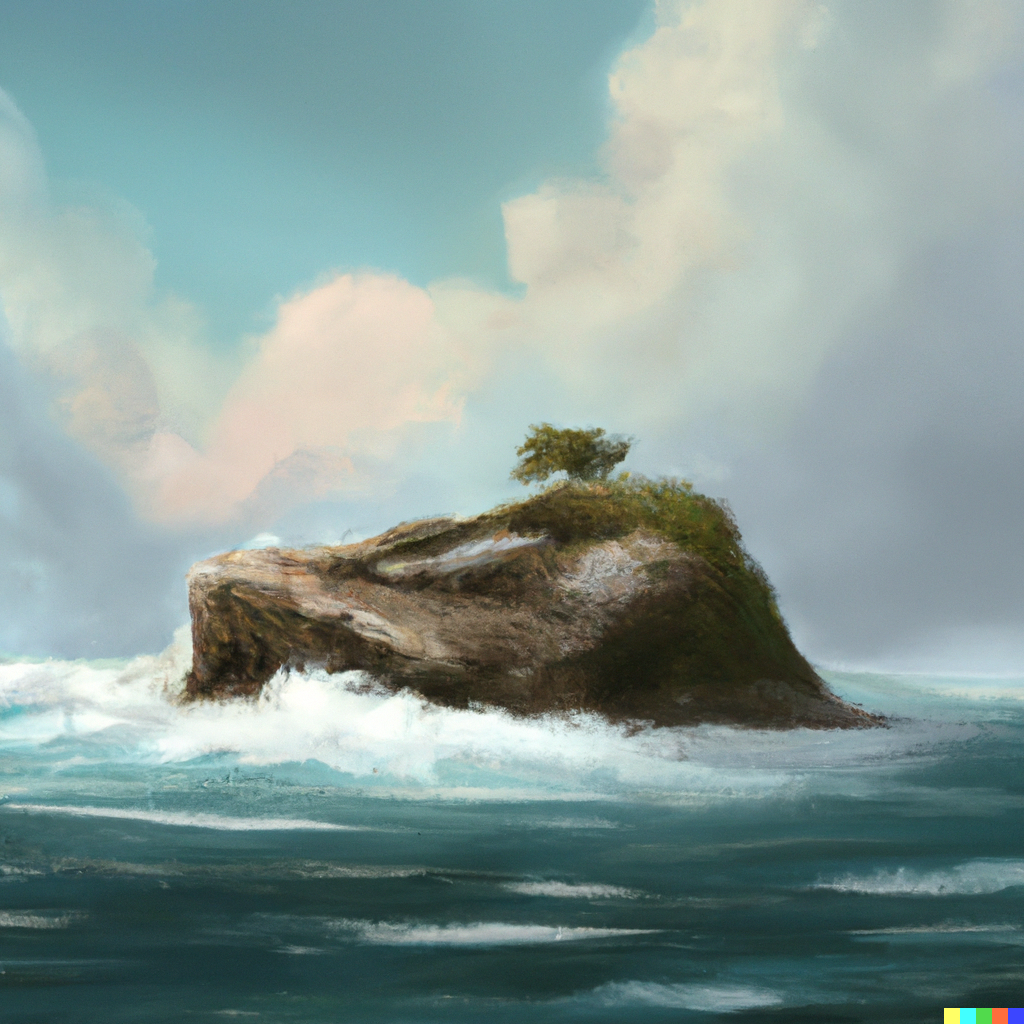
But no ships are moored here today. Party beach is not our destination. Neither will we traverse Whale Cay Passage on this voyage.
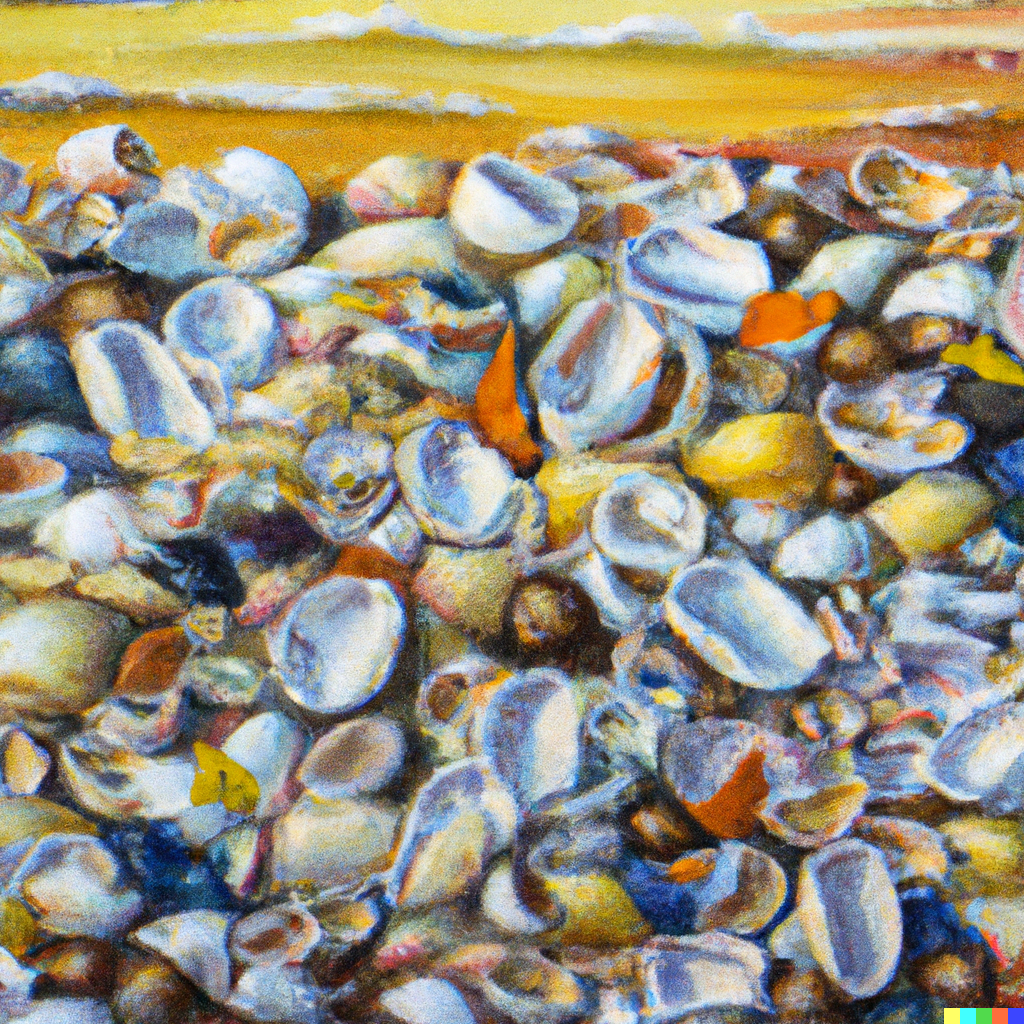
Shell Beach
Two thousand feet southwest of the ship mooring area, the dredge spoils from its creation form a small, sandy islet, unofficially dubbed “Shell Island” by cruisers. As with Pluto’s bid for planethood, Shell Island has not been around long enough to be awarded official “island” status by cartographers. The unpretentious mound of sand mixed with millions of seashells and covered with scattered, scrubby grass patches, appears as little more than a shoal on our charts, but the tiny cay offers an excellent anchorage for our purpose. Shell Island provides shelter from the swells rolling through the cut, has neither trees nor high hills to obscure our view of the sky and is far from any lights that would interfere with our night vision. Apart from those we carry aboard our boats, the closest man-made lights are two miles away. Shell Island is a wild place, a speck of sand frequently passed and seldom visited. No other human presence mars this beach—no tourists, no fishermen, no Haitian refugees, no customs officials, no traffic lights or grocery stores—only three disparate planets brought together by happenstance and fate. Shell Island is primitive, secluded and remote—the ideal place for our saturnalia.

The sun falls below the pines of Great Abaco.
The wind picks up.
The temperature drops.
We drag my dinghy to the top of the beach and prop it on its oars behind us to serve as a windbreak. John had the foresight to gather dry firewood back at Man O’ War Cay. We add to his collection a few pieces of driftwood we find on the beach. Behind our dinghy shelter, a small flame begins to consume our branches and wood scraps.
Soon, yellow sparks crackle and fly high into the fast-darkening night.
Stars gather overhead.
John points into the brilliant sky. “See the three planets grouped in a small triangle there? They’re what we’ve come here for. They won’t appear this close together again for over a thousand years.”
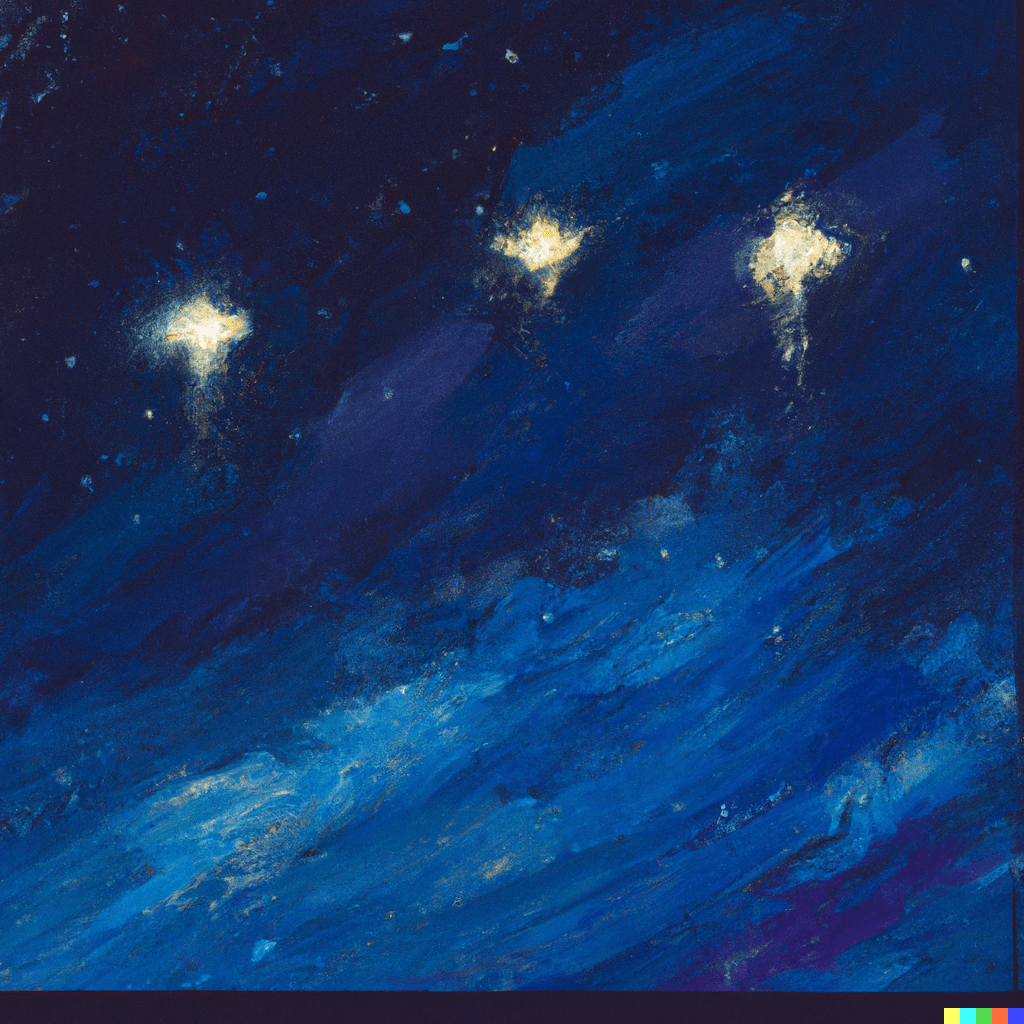
It honestly doesn’t look like much. On a moonless night in Abaco, the sky is one massive cluster of stars, anyway. But one excuse for being here is as good as another. A conjunction of planets is but the magic stone in our experiential soup, imparting mysterious flavors and mystical healing properties as surely as our own presence renders sacred this simple hill of dredge tailings at the edge of a shallow sea. Painted orange by firelight, our three spirit-faces hover before the darkness. The north wind is cold, but we are warm in the shelter of the propped-up dinghy before the flames.
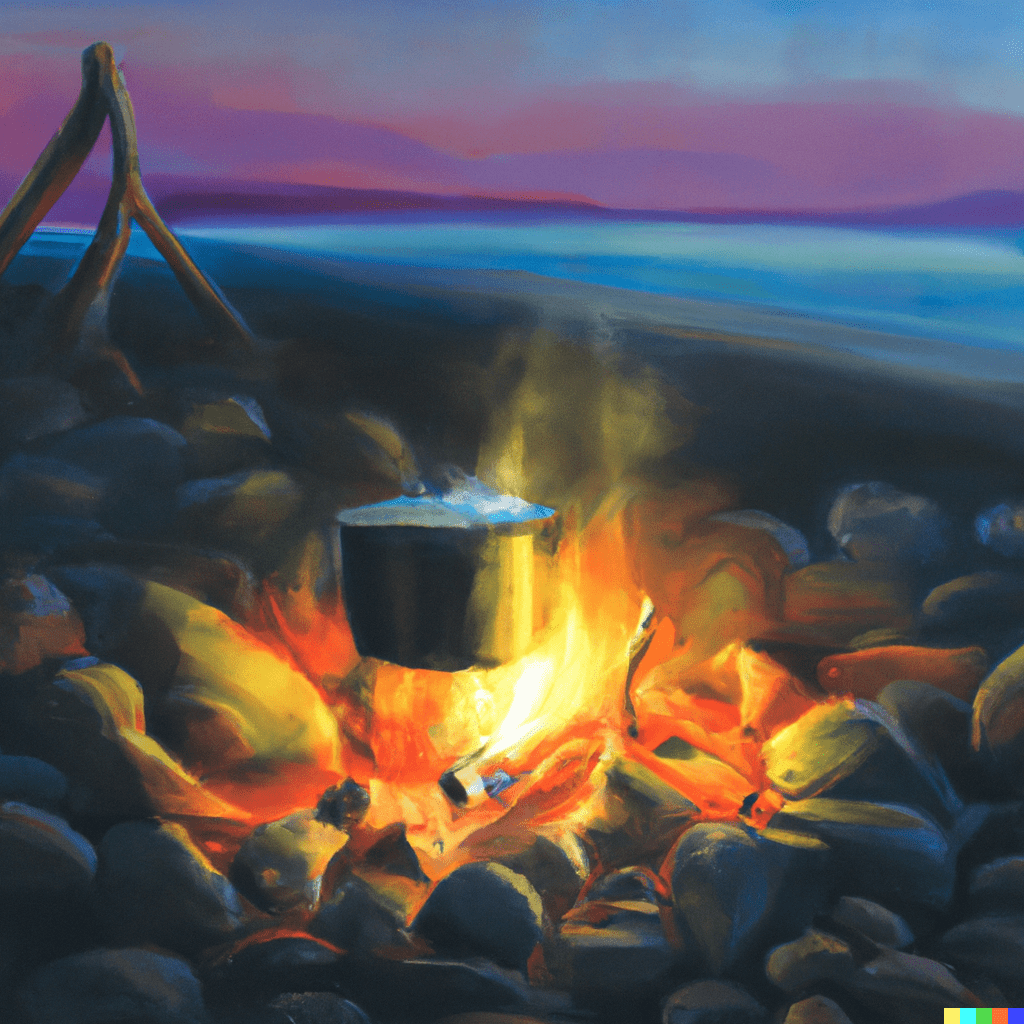
The chicken, cooked with sliced carrots and onions in the iron pot over our humble fire, is delicious. Like happy savages, we strip the bones and toss them into the fire.
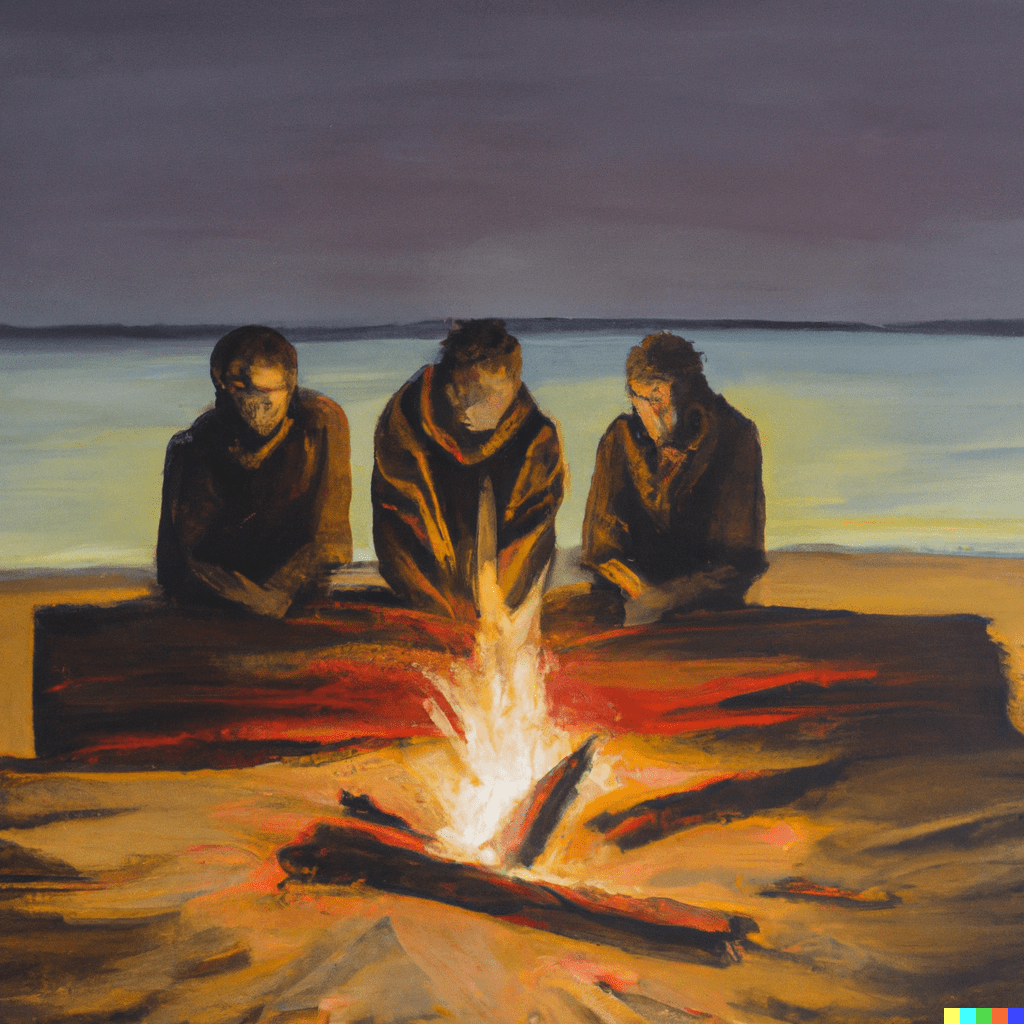
The celestial event brings no floods, earthquakes or political revolutions, no grand strokes of insight, no bursts of creative inspiration. We are but three small men huddled before a flame atop a tiny mound of shells beneath the Milky Way, but the repercussions of this chance arrangement of lights in the sky are large enough for us.
Doc is quiet and reflective.
His eyes sparkle in the firelight.
It is clear this is a moment imagined and waited for since childhood, a long-awaited escape, a hoped-for connection to the deeper and simpler, a purification, an unlearning, an ascension to the mountaintop, a peeling away of layers to expose the core. “I have a heart condition,” he says softly. “I’m not going to live forever. If I am to go, why not tonight beneath these stars?”
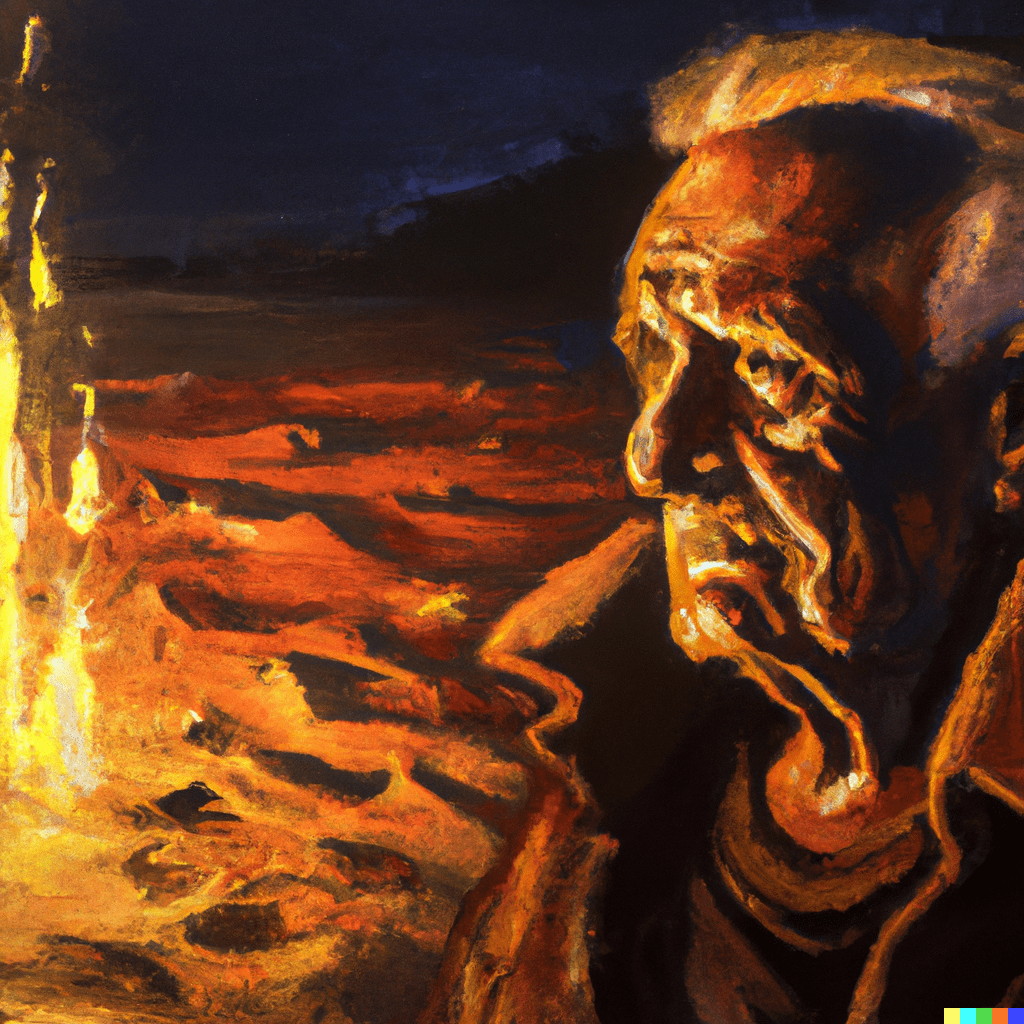
We sit together in silence as the flames die down.
The chill wind overpowers the warmth of the waning fire.
It’s late.
A red moon rises above the horizon, brightens the sky and washes away the dimmer stars.
A hundred feet off the beach, our vessels bob quietly in the loom of their anchor lights. We launch our dinghies, return to warm, waiting bunks and sleep as one can only sleep after a day of sailing and a full plate of dinner.
In the morning, Doc pulls his anchors and heads back to his mooring at Man O’ War Cay. John and I wave and set a divergent course slightly farther south across the Sea of Abaco to Marsh Harbour on the mainland.
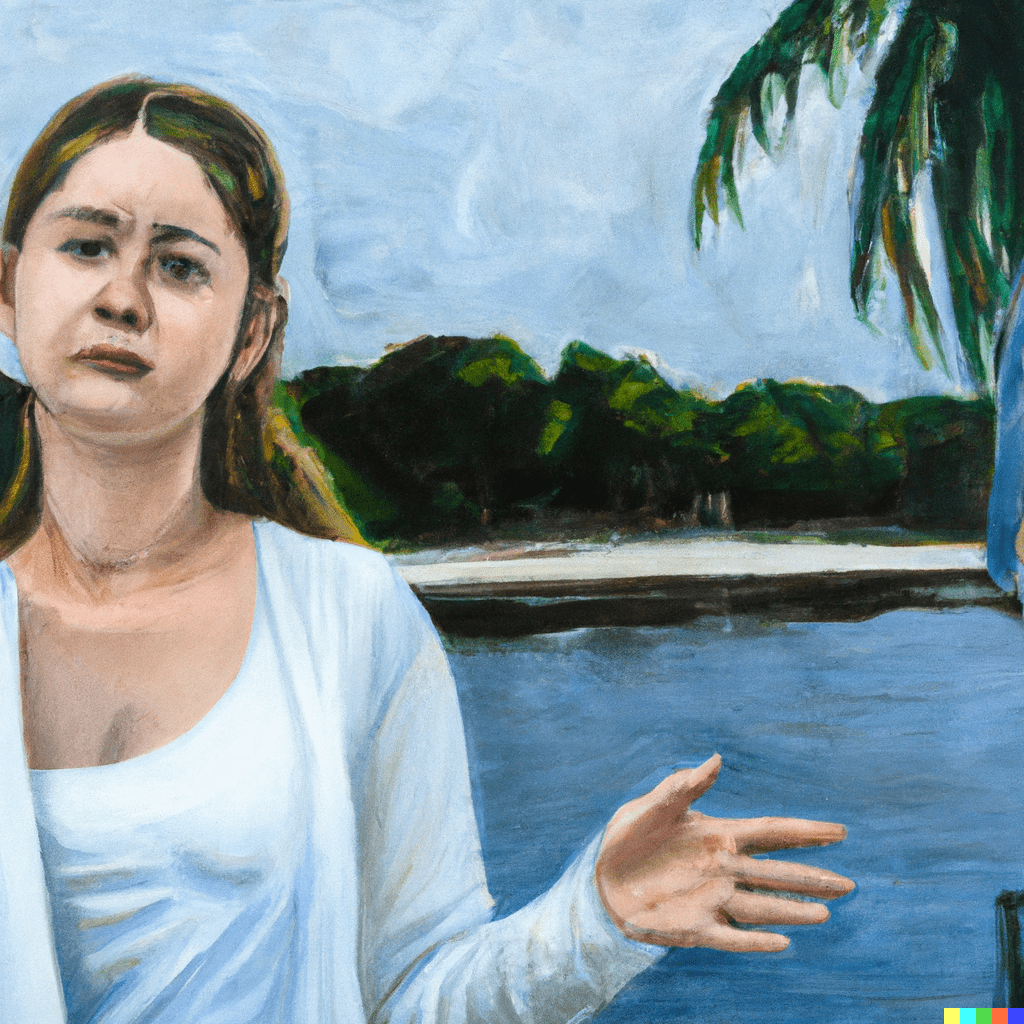
A week later, we return to our usual anchoring spots at Man O’ War.
Rabbit sits peacefully on her mooring but no dinghy is tied behind her.
“He had to go home for a while,” Diana explains. “Family matters.”
We don’t see him again.
Creating Art with AI
Generating the digital paintings used in the story involved entering detailed instructions that usually required a number of iterations before I was able to create useful images. Below are the cues that resulted in the images I used above. The phrase “digital art” is supposedly used to instruct the AI to create higher quality images though I wasn’t able to see any noticeable difference.
- oil painting of two-masted forty-foot black and white tancook whaler schooner anchored in the Bahamas
- oil painting of brown-haired white woman rowing a small rowboat in the Bahamas
- oil painting of old man in an outboard-powered dinghy in tropical waters
- oil painting of pirate flag flying from the mast of a sailing schooner in tropical waters, digital art
- oil painting of planetarium in oklahoma, digital art
- oil painting of conjunction of three bright planets in the night sky, digital art
- oil painting of distant view of three small sailboats sailing in tropical waters with low islands in the background, one boat has two masts, digital art
- oil painting of small, barren, rocky, low tropical island surrounded by ocean with crashing waves, digital art
- oil painting of beach sand covered with seashells, digital art
- oil painting of sunset in the bahamas, digital art
- oil painting of three bright stars in the night sky, digital art
- oil painting of iron cooking pot on a campfire on a beach at night, digital art
- oil painting old man’s face lit by firelight on beach at night, digital art
- oil painting of slightly sad white woman explaining with tropical lagoon background, digital art
The AI presented a number of obstacles: For example, when I asked it to illustrate “sailing boats at anchor,” it couldn’t understand that the sails should be down, even when I clarified “with sails down.” And in the image with the three sailboats under way, I wasn’t able to instruct the AI that one of them should have two masts. This suggests that the AI has a certain concept of “sailboat” but doesn’t know what a “mast” is. However, when I requested images of “schooners,” the AI was able to provide them. We can assume that the AI has data that describe the word “schooner” but it doesn’t understand what makes that type of vessel different from a ketch or a sloop. It’s as if the AI knows that an image of a rowboat contains a rower, oars, and a boat but has only a vague concept of how those elements interact.
Also, each generated result is independent of any previously generated result. This means it’s impossible to develop characters with certain physical attributes, arrive at a final result, and then instruct the AI to “put Dave, John, and Doc on a beach.” A generic “elderly man” character will look different in each image.
The AI also generated some almost-wonderful images that had bizarre flaws. I really wanted to use the image below for “Diana Rowing,” but the oars were just crazy. Also, Doc motored over to the schooner but the AI failed to generate an “outboard motor powered dinghy.” AI-generated imagery often struggles with faces, and though you can get away with quite a bit when you’re creating oil paintings, the eyes in the “Diana explains” image below are just creepy. And when I asked for a “pirate flag in the Bahamas,” the AI created a strange mix of a pirate flag and a Bahamian flag. What’s missing is an opportunity to provide verbal instructions that could help the AI correct an image and learn from its errors.
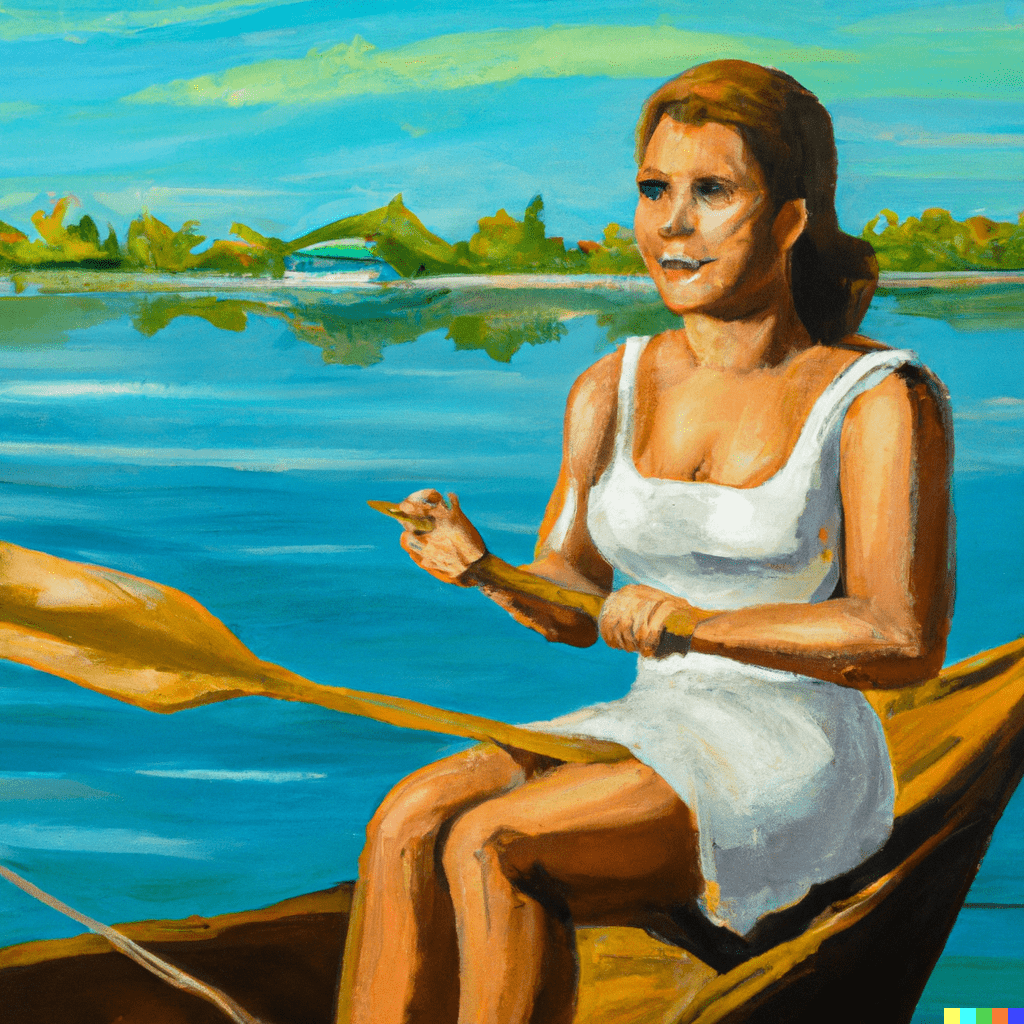
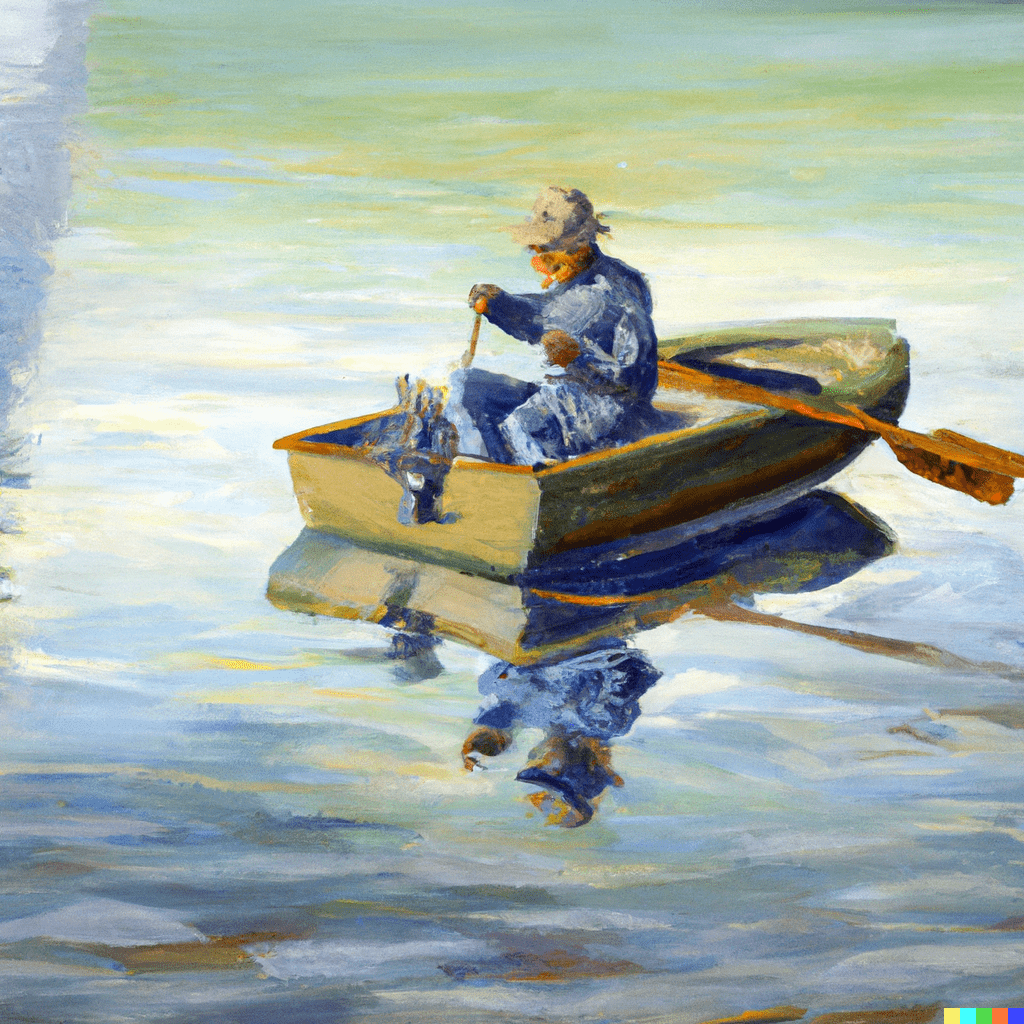
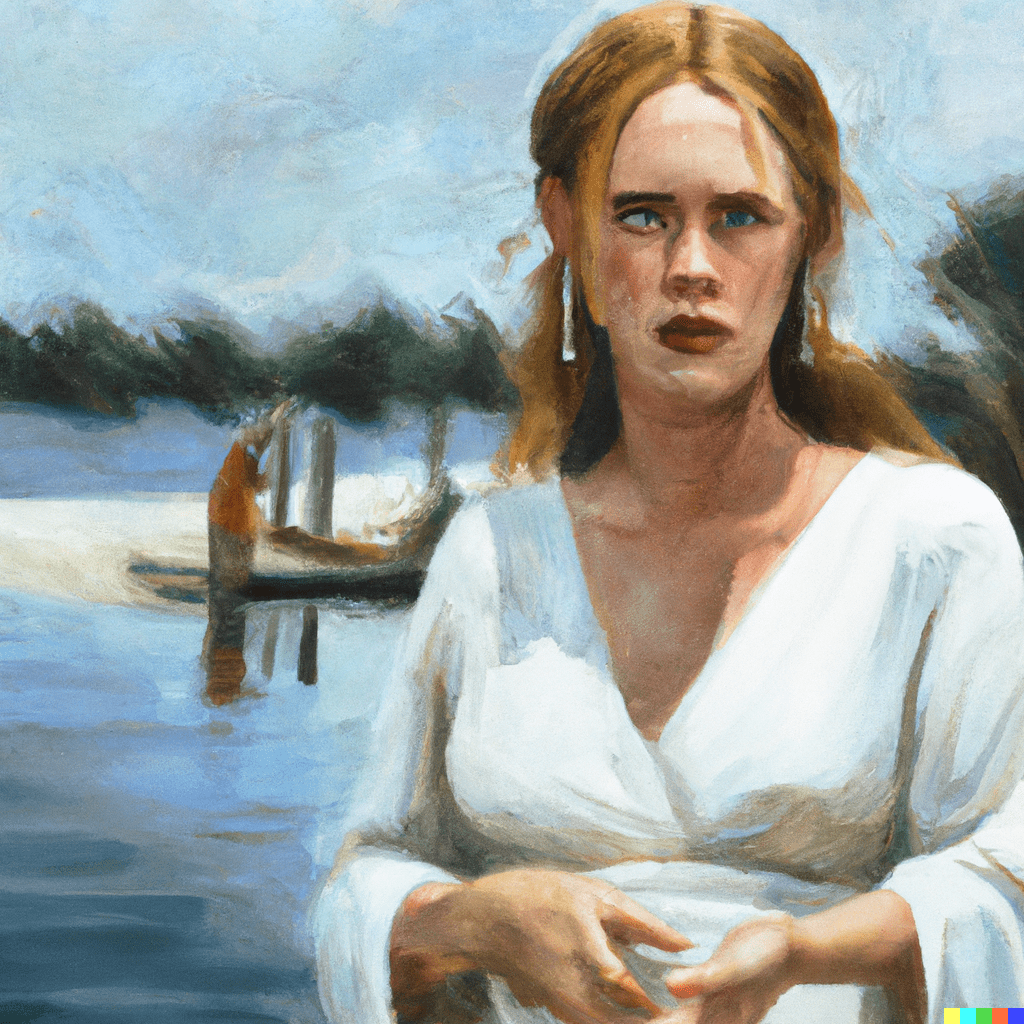
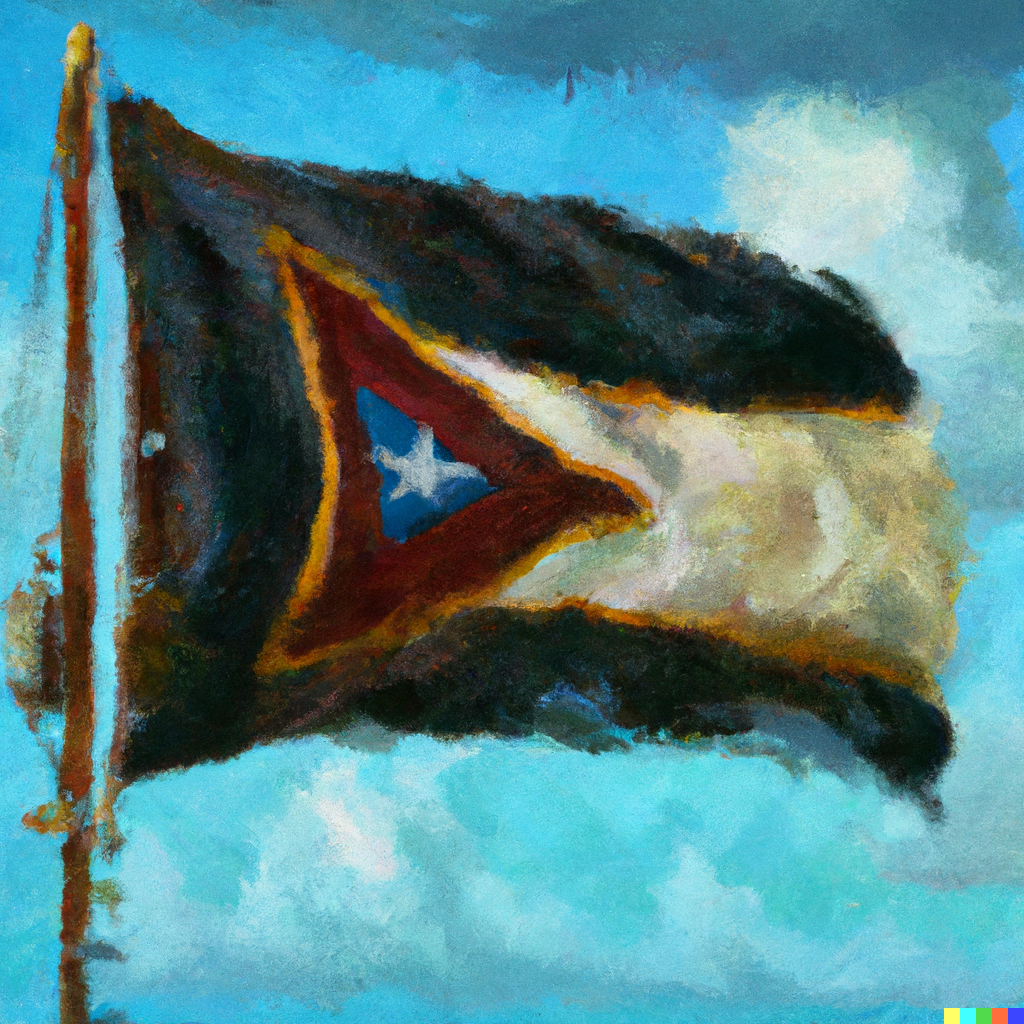
I chose oil painting style to create a certain look for my story. Here are a few variations on the same instruction (cubist, etching, children’s crayon drawing, colored-pencil, etc.) to show the possibilities as well as the limitations:

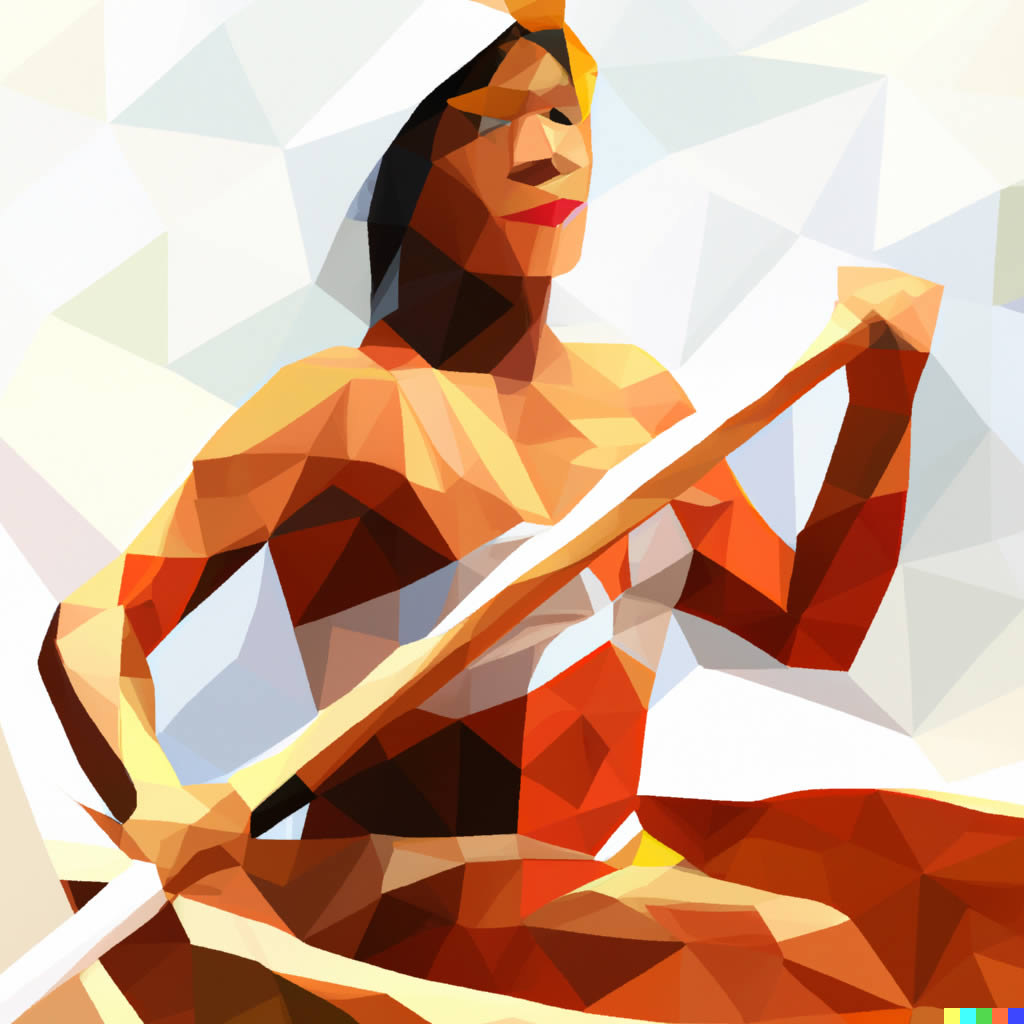

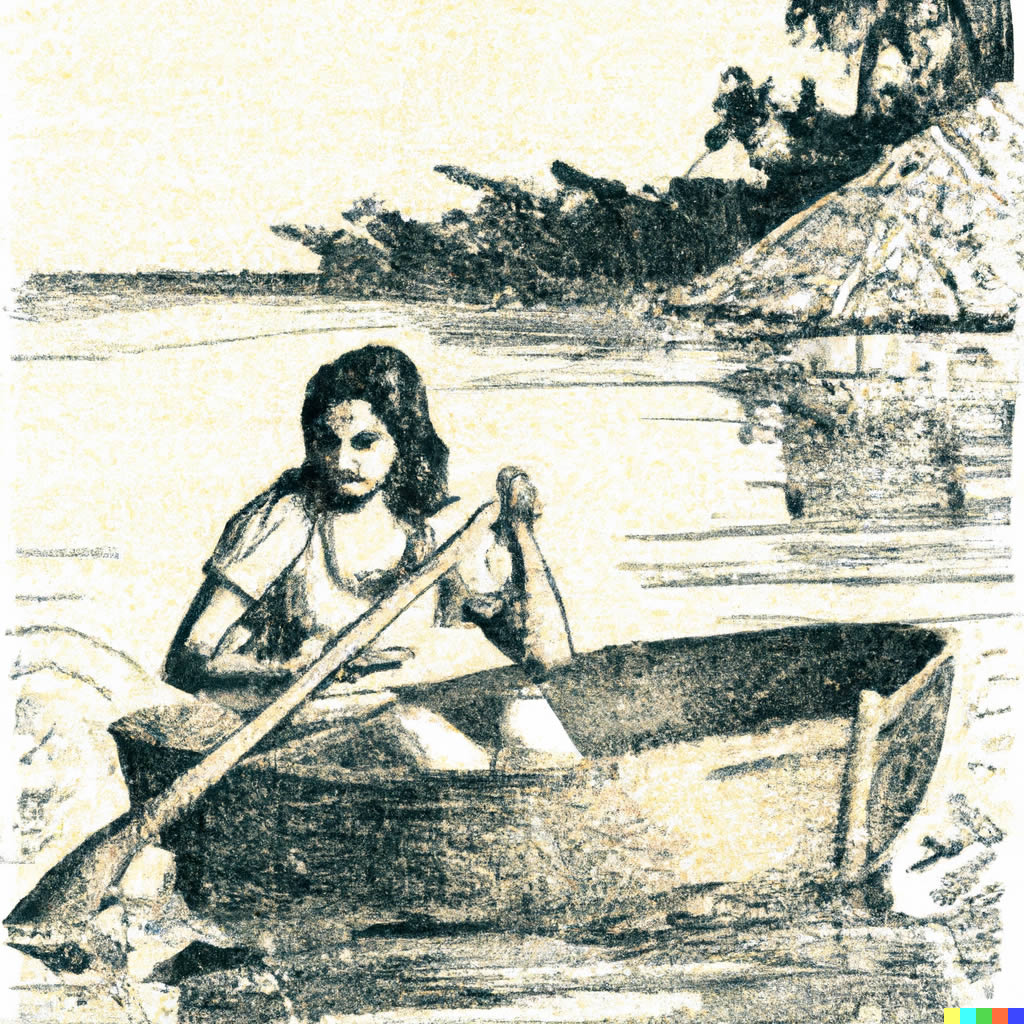
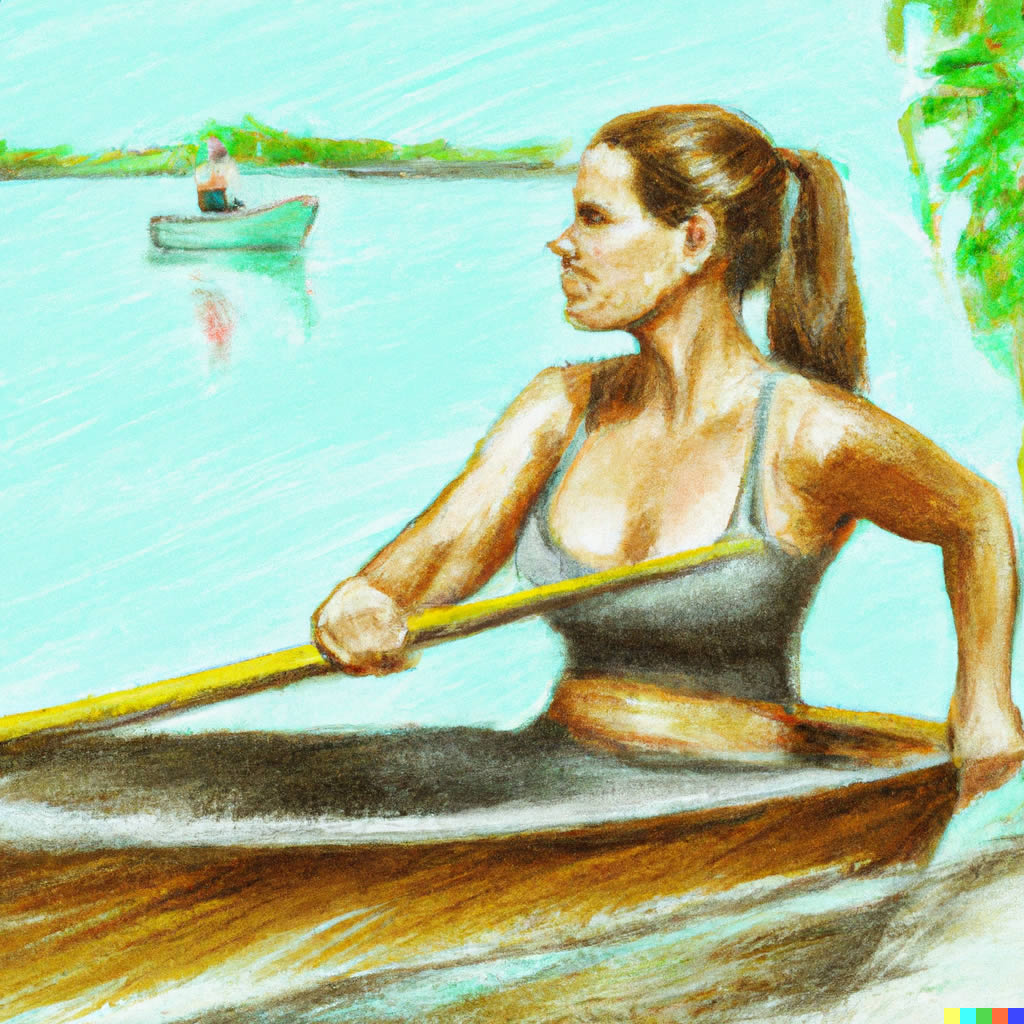
Intelligent Art?
AI-generated art is clearly lacking in intention—which suggests that the best results will come from those humans who are able to enter the best instructions. To deeply understand the capabilities and limitations of the AI will require a human “artist” to invest many hours of experimentation. It’s best to think of the AI as being analogous to a powerful musical instrument that requires a virtuosic player (and a degree of luck) to produce acceptable aesthetic results.
But ask yourself: Despite the fact that I was unable to coach the AI to produce the literal images I’d hoped to use, did the images enhance your experience of the Saturnalia story? That’s really the most important criterion for deciding whether or not AI has something to offer to storytellers.
I spent about 90 minutes creating images for the story and choosing which variations to use (the AI always generates three choices). Was the result worthwhile? Share your comments.


